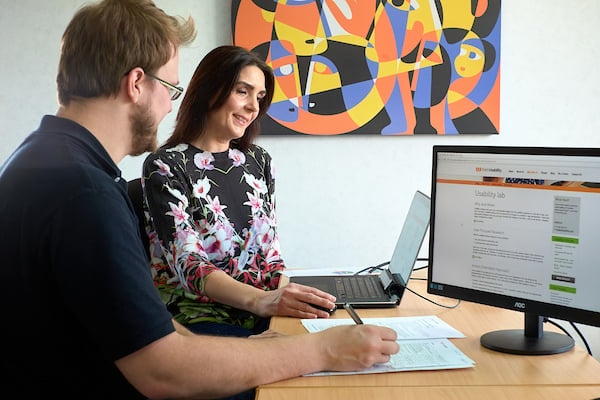There are many different ways to approach usability testing these days… lab-based testing, online surveys, field research and self-videoing testing to name just a few. While all have their place in the UX world, you need to consider carefully which methodology you choose. Pick incorrectly and you are likely to end up with low-quality insights and wasted time and money.
When to use which usability testing approach?
Let's take a look at two of the most common types of usability testing...
Moderated, lab-based testing

Pros: very high-quality, in-depth feedback on a website as a whole and great insight into user needs that can inform website strategy
Cons: can be expensive and normally takes a couple of weeks to get insights
Unmoderated, remote testing

Pros: super quick - tester feedback can be gathered within hours - and great for gaining highly targeted insights from broad consumer groups
Cons: difficult to test prototypes, can't probe for further insight, testers might be 'experts' and not give genuine user feedback
While both these approaches might work, sometimes we find our clients want something that combines the best of both worlds.
In these cases, we can offer ‘Quick and dirty’ testing. This approach combines many of the advantages of moderated, lab-based usability testing with the speed and cost of unmoderated, remote testing.
What is 'quick and dirty' testing?
Fast-paced, targeted testing of a website or app with real users in moderated sessions. These can be conducted in person or remotely, depending on who the testers are.
Why is ‘quick and dirty’ testing a good idea?
- We get the right testers – we recruit testers that accurately meet your user profiles, including B2B and niche audiences
- Sessions are moderated – this keeps testers focused on the task in hand and allows us to ask ‘why’ at the right moments
- We can test prototypes – that testers cannot use without guidance
- You can observe in real time – via a live video link, allowing you to shape the research between sessions
- It’s still quick - a typical round of ‘quick and dirty’ testing takes between 1-5 days (depending on how hard your testers are to recruit)
When might you need a round of ‘quick and dirty’ testing?
The approach is best used for small scale, tactical research when you need insights fast. For example:
- During the launch of new product or service range for your business
- When redeveloping your checkout process
- Before developing new, bespoke functionality for your site
What does it cost me?
A round of Web Usability ‘Quick and dirty’ usability testing starts from £1000 and includes:
- Insight from 4 of your target users
- Moderation of testing sessions by one of our experienced UX Consultants
- Video recordings of all testing sessions
Interested? Read more about 'quick and dirty' usability testing and get in touch with our UX Consultant, Lucy at lucy@webusability.co.uk for more information!
Read more: What is the purpose of usability testing, Usability testing methods - all in moderation


